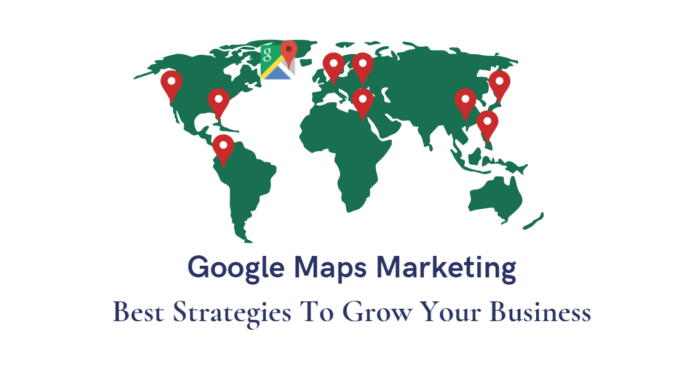- What is Google Maps marketing?
- Best Google Maps marketing strategy
- Ads on your Google business profile
- Optimize your Google business profile
- Conclusion
Google Maps marketing is an excellent opportunity for local businesses to reach customers easily.
It’s a user-friendly tool that helps people find your business when they search on Google or use Google Maps.
To make the most of this marketing opportunity, it’s crucial to understand and utilize Google Maps effectively.
If you are new to marketing, check out our article and learn about the principles of marketing.
In this article, I’ll guide you through the process of getting started with Google Maps marketing and optimizing your Google business profile.
Why is Google Maps So Important?
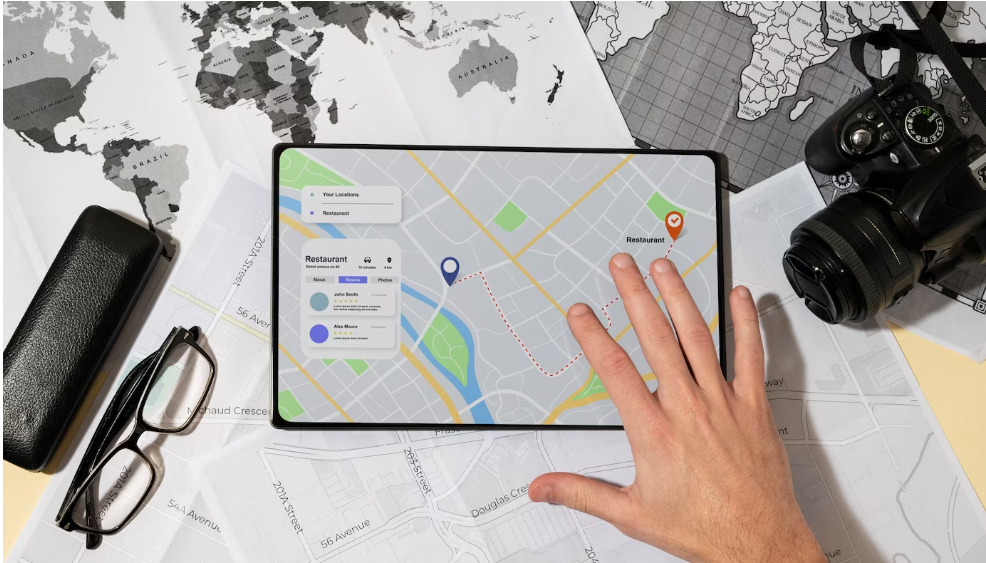
- One-third of mobile searches are location-based, meaning people often search for businesses near their current location.
- Local searches are growing 50% faster than overall mobile searches, indicating a rising demand for local information.
- In 2013, 70% of searchers used the “click-to-call” function directly from search engine result pages, allowing users to contact businesses immediately.
- Searches for the “best place to buy” specific products or services increased by 70% between 2015 and 2018.
- The popularity of “near me” searches has soared by 500% in recent years. These searches include phrases like “car dealerships near me” or “wedding dresses near me.”
- Google recognizes the importance of local businesses and released an algorithmic update in July 2014 to prioritize them for location-specific searches on mobile devices.
Although there are various local guide Android app platforms available, this article will primarily focus on Google Maps marketing.
The strategies and tips discussed will apply to the mapping app on iPhones, iPads, and Android devices.
What is Google Maps?
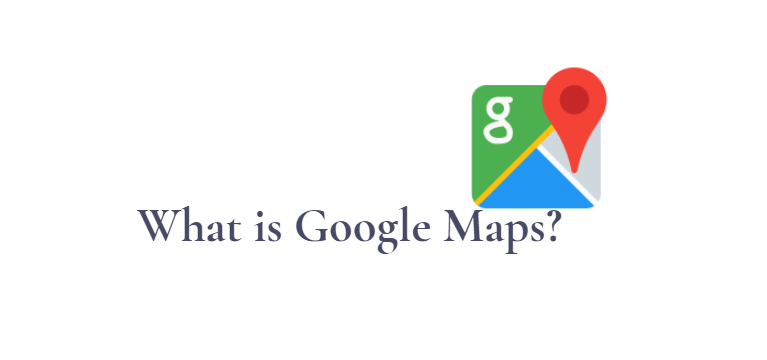
Before we delve into the details of Google Maps marketing, it’s important to understand its origins as a local marketing tool.
Google Maps had humble beginnings as a C++ program developed by Where 2 Technologies.
Over time, Google acquired several companies and launched its desktop web mapping service in 2005.
Subsequently, in September 2008, the Google Maps mobile app was introduced for Android devices.
The app quickly gained popularity among commuters who found it useful for navigation, street view, public transit information, and discovering local businesses.
By 2013, it had become the most widely used smartphone app worldwide.
While I’ve previously discussed local business marketing and local SEO, it’s worth noting that optimizing your website for Google search results is just the starting point.
There is a distinction between search results on the web and within the map interface.
Therefore, to improve your visibility on Google Maps, you may need to optimize your Google Maps listing separately in a local guide.
This will help you appear higher in Google Maps results. Your website should also integrate with the mapping app using your API key.
Moreover, you have the option to showcase your local inventory and buy ad space to enhance your position in Google Maps results.
By incorporating navigation app capabilities, customers can even receive real-time traffic updates to reach your Google business profile efficiently.
Now, let’s dive into the world of Google Maps marketing and learn how to drive relevant local traffic to your store, including the possibility of offering turn-by-turn walking directions if desired.
Google Maps Marketing Strategy – 4 Best Practices to Follow

To improve your business’s visibility on Google Maps search results, start by claiming a listing on Google My Business.
This listing will appear in search and map results. Ensure your website is mobile-responsive for better performance.
The verification process might take a few days as Google wants to verify your business.
They’ll send a physical postcard with a PIN. Enter the PIN through the provided link to get started.
If you are familiar with Google My Business check out our guide to learn how to keep your reviews in case of a business name change.
Accuracy is crucial when providing information about your business. Google relies on the NAP principle (Name, Address, Phone number) to determine your business’s location and display listings.
On-Page SEO is an essential initial step for local SEO and Google Maps marketing.
Unfortunately, many local businesses provide incomplete or incorrect information and neglect to update their local guide listings.
It’s important to be punctual and consistent with your address formatting across the internet.
Citations, and mentions of your business on other platforms, can affect rankings.
Consistency is vital to avoid issues. Duplicate Google+ listings can lead to penalties.
Verify your business address with the local postal service and consider conducting a local SEO audit for a more comprehensive analysis.
What is Google My Business?
Google My Business is a valuable, no-cost tool designed for business owners to effectively manage and enhance their business profiles on Google Maps.
For more information on Google My Business, see our article and learn how you can get started and get more customers by utilizing it.
When you create a Google My Business profile, it typically includes essential details such as your business name, location, and operating hours.
In the image below, you can see an example of a typical Google My Business profile belonging to one of the top restaurants in LA, CA.
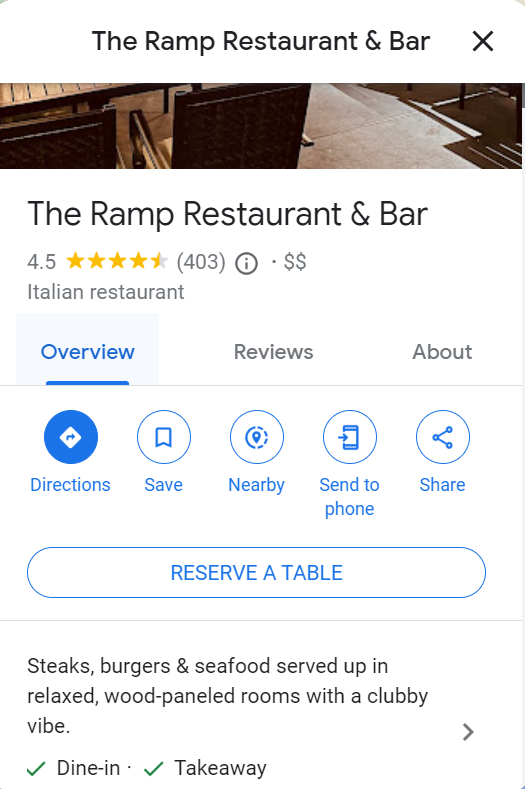
By claiming your business through a Google My Business profile, you gain the ability to optimize your presence on Google Maps.
This involves ensuring that customers have access to accurate and relevant information about your business.
Additionally, your Google My Business profile enables you to engage with customers who leave reviews, respond to their feedback and build connections.
You can also monitor valuable insights provided by Google Maps Ads to understand how customers are interacting with your Google business profile.
1.) Get High Star Ratings
After learning the fundamentals, it’s important to encourage customers who visit your store to leave reviews.
Do you have a WordPress website? Check out our article about the 10 best review plugins for WordPress.
According to a survey conducted by Search Engine Land, 72% of consumers stated that positive reviews increased their trust in a local business.
The concept of social proof holds significant importance.
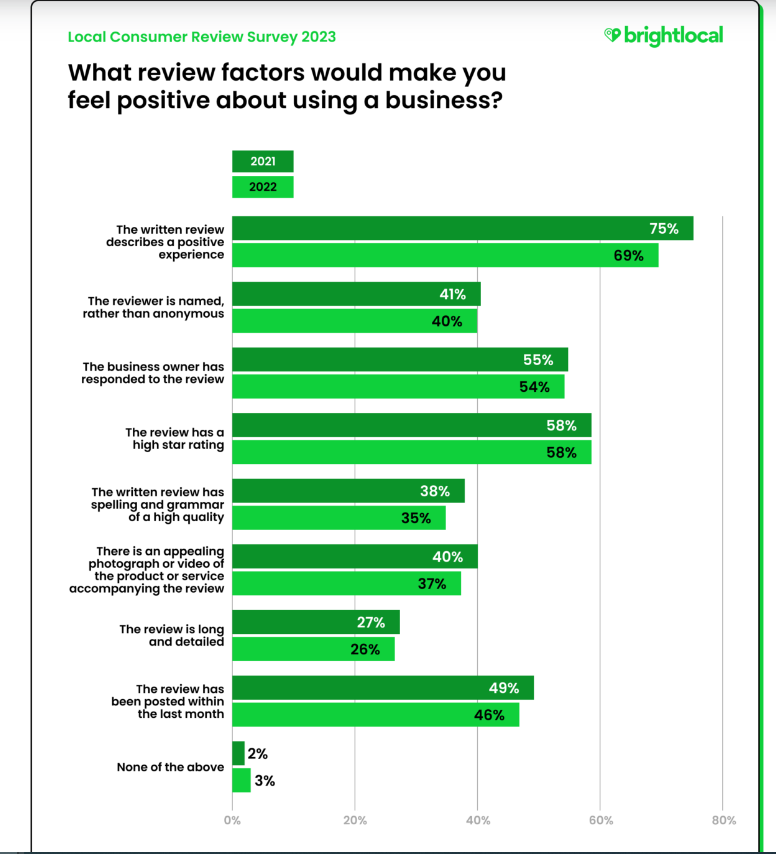
But what are the types of reviews you can get?
The challenge lies in the fact that customers tend to share their negative experiences online more frequently than positive ones.
To tackle this, the first step is to actively encourage and remind your customers about the ease of reviewing your local business on their Android devices, iPhones, and iPads while they’re out and about.
The second step is to diligently monitor and address the reviews. It’s essential to have dedicated customer service personnel in place.
It’s worth noting that only 23% of customers post negative reviews out of spite, while 70% of those who voice complaints online hope to receive a response.
With the Google My Business dashboard, you can conveniently access and manage all the new reviews. This allows you to promptly respond to customer feedback and engage in effective reputation management.
Can you turn off Google reviews? Check out our comprehensive guide to find out.
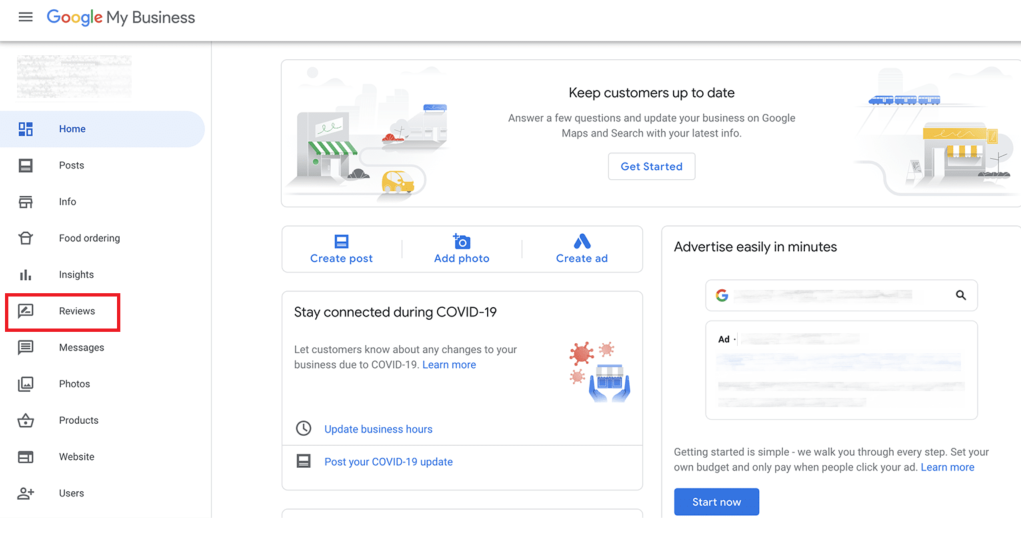
When faced with a negative review, avoid launching a personal attack in response. Instead, maintain a courteous approach and express gratitude to the customer for their feedback.
In cases where a review violates Google’s guidelines, you have the option to flag it as inappropriate.
However, it’s important to note that you cannot edit negative reviews.
For a more comprehensive guide to getting more online reviews, we have provided detailed information in another article.
Keep in mind that simply having a higher number of 5-star reviews does not guarantee a higher placement in Google Maps search results.
Other factors also come into play in determining your business’s visibility and ranking.
Next up, take advantage of reviews in your marketing strategy.
Get More Reviews
The most effective digital marketing strategy to get reviews, especially for salons and other service companies, is to simply ask customers for them during in-person interactions.
Many customers are happy to oblige and view it as an extension of their relationship with you.
Although it is still important to focus on the quality of the reviews, you can request reviews via email by including a link to your Google My Business page in your message.
Another option is to include a review request in your digital receipt.
Payment merchants like Square offer customization options, allowing you to add a request directly to the receipt.
Simply saying, “Love us? Give us a review!” along with a link to leave a review can significantly increase your chances of receiving reviews.
Check out our article on how to get reviews quickly on your products.
Once you start receiving reviews, make sure to engage with them. Interacting with reviews provides Google with more content to share with potential customers, giving the algorithm a reason to rank your page higher in search engine results and on Google Maps.
The specific role of reviews in the Google Maps algorithm is not fully known.
However, you can check the number of reviews and ratings for the top Google Maps listing in your industry and locality as a benchmark.
As I continue my search for Italian restaurants in Los Angeles:
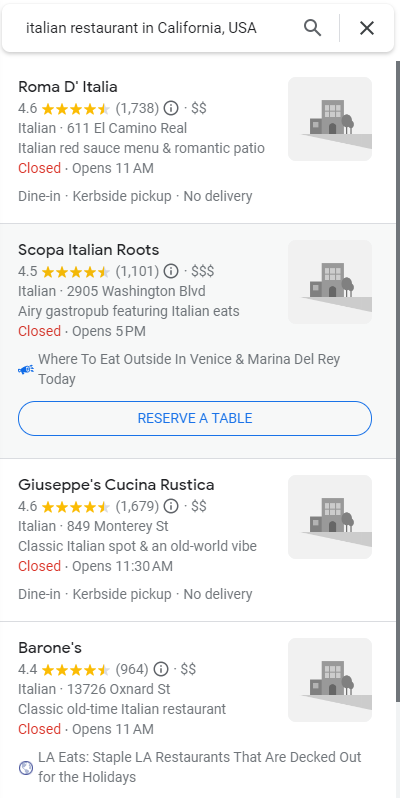
It appears that in order to have a chance at appearing in the top 5 results, your business listing needs to have a minimum of 40 reviews.
Additionally, it’s important to maintain a rating above 4 to be competitive in the rankings.
Optimize Your Pages
When it comes to Google Maps marketing, it’s important to remember that Google doesn’t only rely on information from its own platform.
Other review sites such as Yelp, Facebook, Yellow Pages, and TripAdvisor also hold significance.
You can use the review snippet feature to showcase reviews from various websites on your search engine results page (SERP) listing.
Additionally, for certain businesses, Google may provide links to reviews on other sites.
A hotel listing can serve as an example:
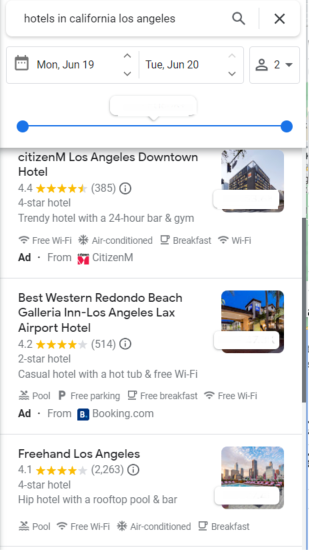
Due to this, it’s not necessary to solely focus on your Google My Business page when requesting reviews.
Users have their preferred social media and review platforms, so it’s essential to make it convenient for them to leave reviews by offering a Google Maps review link.
However, it’s also important to welcome and encourage reviews on other sites that your customers prefer.
Use Google Maps Ads to Market Your Local Businesses
If you’re looking to make a strong impression on Google Maps, there is an option to invest in paid advertising.
By utilizing the location extension feature, you can specifically target and bid on users in a particular location.
Google has previously tested advertisements within maps and promoted AdWords location extensions.
However, at the Performance Summit, they introduced new types of local search ads. The recently launched Google Maps Ads can guide real-time traffic directly to your physical store by providing turn-by-turn navigation.
This mapping application offers both online and offline map functionalities, along with convenient zoom options for a user-friendly map viewing experience.
Where Do Ads Show Up on Google Maps?
Paid advertisements on Google Maps are easily distinguishable by a purple ad label located above the list of organic search results.
Additionally, your local business will be represented by a purple icon on the map itself. Here’s an example of how map results for a search on Greek restaurants in New York might appear.
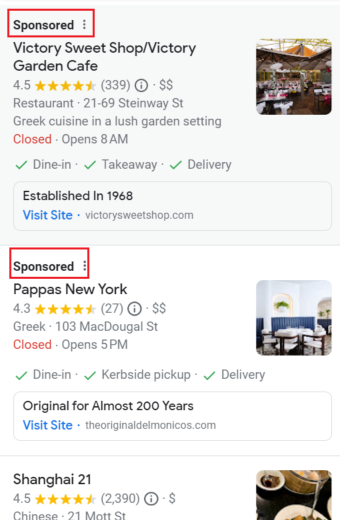
These paid advertisements will be visible on various platforms, including the Google Maps app, as well as mobile, desktop, and tablet websites.
They will also show up in location-related searches on Google.com, specifically when users click on the “More places” link at the bottom of the Local-3 pack.
It’s worth noting that although businesses like Victory Sweet Shop and Pappas New York may have secured prominent business visibility through paid ads, but their ratings in the local guide can be particularly unimpressive.
It’s important to understand that paid advertisements cannot replace the efforts of organic marketing; they can only enhance them.
Ads with location extensions, as the name suggests, appear at the top of Google Maps results, regardless of a business’s popularity or other local search ranking factors.
Otherwise, the appearance of map results remains unchanged.
However, Google Maps went through a significant change in 2020 June.
These new options, known as Local Search Ads, include:
- Promoted pins: These pins are purple instead of the usual red and can feature your business logo.
- In-store promotions: Customizable offers and promotions to attract customers to your physical store.
- Customizable business pages: Enhance your Google business profile with customized content and information.
- Local inventory search ads: This feature requires businesses to connect their local inventory feeds with their Merchant Center accounts.
In the meantime, it’s crucial to prioritize the quality of your ads.
The Google algorithm takes into account various factors beyond just your PPC bid when determining the placement of your ads in the search engine results pages (SERPs).
Monitor and optimize your ad quality score regularly. A higher quality score increases the visibility of your ads to more users, while reducing the cost per click.
To run ads on Google Maps currently, follow these steps:
- Enable location extensions within your Google Ads account.
- Ensure your Google My Business page is accurate and up to date. If you haven’t already, claim and verify your page.
- Use location targeting and bid by location, focusing on specific areas and setting bids based on user location.
Tip: Allocate your highest bids to users closest to your business for better results.
How to Track the Performance of Your Google Maps Ads?
In your Google My Business dashboard, you can find various metrics that give you insights into how your business is performing on Google Maps.
These metrics are collected using your unique API key. If you want to assess the effectiveness of your Google Maps marketing, this is the place to begin.
One important metric you’ll find is the number of clicks on your phone number.
You’ll receive a detailed breakdown of the phone calls that have taken place on different dates.
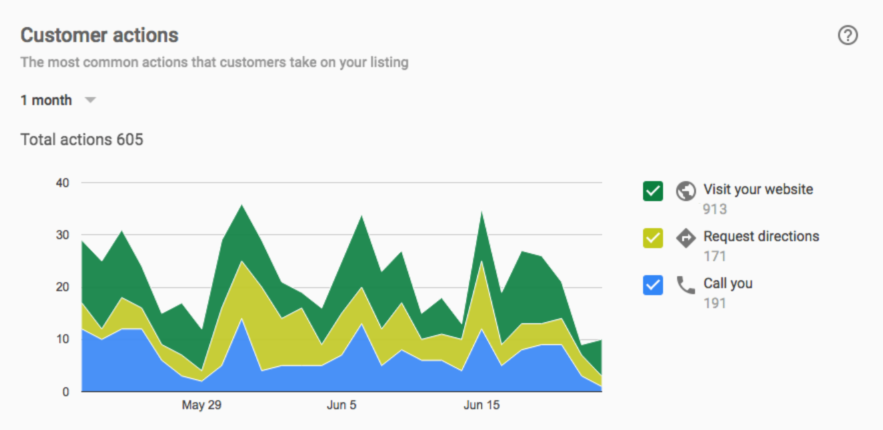
You’ll also be able to see the number of clicks from people who are seeking turn-by-turn navigation to your business.
Similarly, search ads can generate three types of clicks, which serve as useful metrics to measure the success of your Google Maps marketing campaigns.
- Get location details: This type of click indicates that users are interested in learning more about your business and its location.
- Get directions: Clicks on the “Get directions” option signify that your ads are effectively driving traffic to your physical store.
- Mobile clicks-to-call: These clicks are particularly valuable as they represent potential leads.
Google map ads offer a powerful means to attract potential customers.
One notable feature is the availability of offline maps, which allows consumers to conserve their device’s battery while accessing turn-by-turn navigation in real-time when they are in close proximity to your business location.
Optimize Your Google My Business Account
Ensuring that your Google Business Profile contains accurate and detailed information is crucial for instilling confidence in searchers.
According to Google’s local ranking optimization guide, local search rankings are primarily influenced by three factors:
1.) Relevance
Your Business Profile provides fields to showcase what your business offers, such as Products/Services, Description, and Category.
It’s important to fill out these details accurately and comprehensively, using relevant keywords.
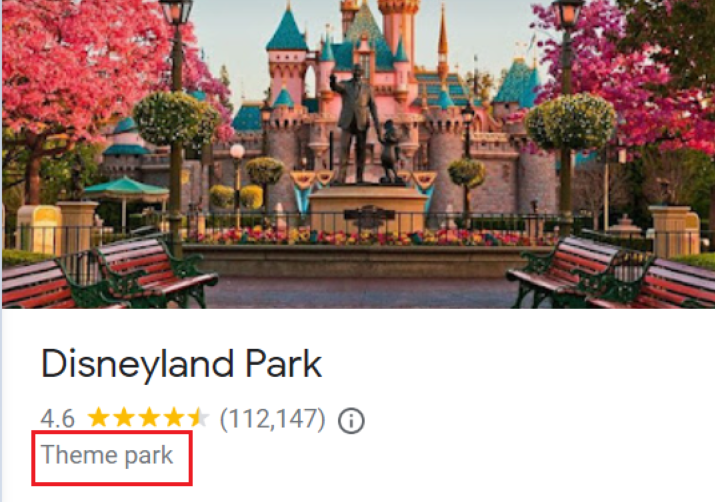
This helps your business profile appear in searches related to your business.
2.) Location Details
Google Maps takes into account the proximity of your business to the searcher based on their search terms, their device’s location, or the map scale they’re viewing.
Optimizing for distance involves keeping your name, address, and phone number (NAP) up to date.
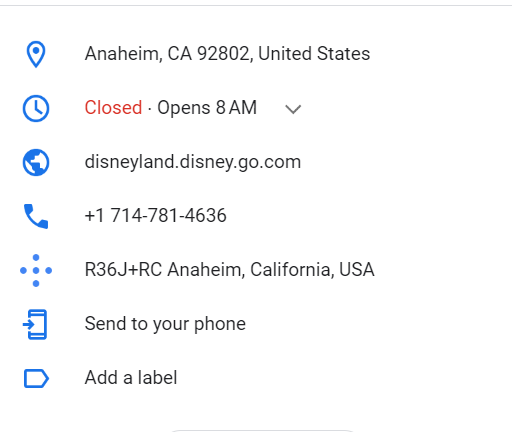
If applicable, specifying a service area and additional locations can also enhance your optimization efforts. Adding the correct business hours is an important point I would like to emphasize here.
3.) Distinction
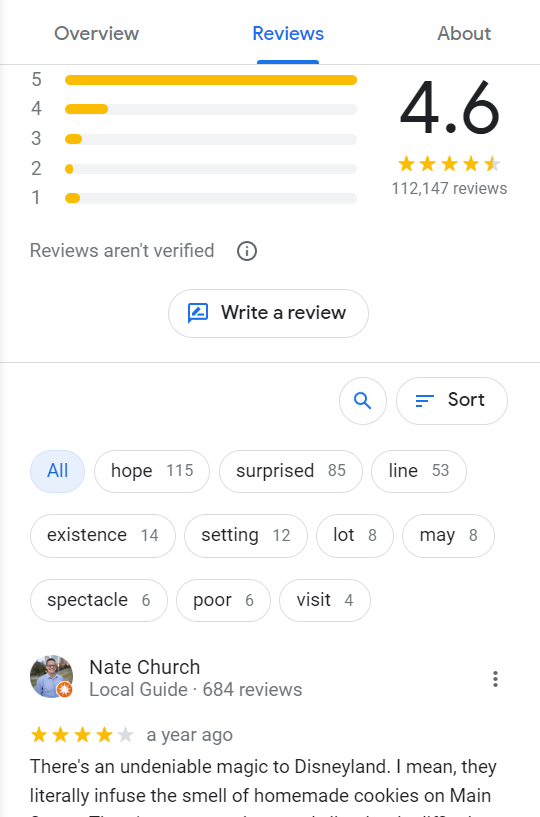
Prominence refers to how Google Maps determines the ranking order of results.
It considers factors such as media mentions, branded searches, and business profile reviews. Accumulating positive reviews is an effective way to enhance your prominence.
Negative reviews are not necessarily detrimental, as they can demonstrate transparency and trustworthiness if the majority of reviews are positive.
Responding to reviews, both positive and negative, on a regular basis further strengthens trust with your audience.
Start Google Maps Marketing Today
Google Maps marketing has become the go-to strategy for local businesses aiming to attract both online and offline customers.
To kickstart your Google Maps marketing efforts, I suggest focusing on optimizing your Google My Business listing and actively encouraging customers to share their reviews.
Additionally, leveraging Google Maps ads can be a great way to drive more traffic to your website and physical store.
However, always keep in mind that delivering exceptional customer service is at the core of any successful business.
By treating your customers well, you can create positive experiences that lead to glowing reviews, ultimately attracting more people from your local area to choose your business.
Frequently Asked Questions
The cost of advertising on Google Maps varies depending on factors such as the competitiveness of keywords, targeting options, and ad placement.
It is determined through a bidding system where advertisers set their budget and bid for ad placements.
Google Maps is regularly updated by Google to ensure accuracy and provide the latest information.
The frequency of updates can vary depending on various factors such as user-generated content, changes in road networks, new businesses opening or closing, and updates from data providers.
However, Google typically strives to update Google Maps data on a regular basis to provide users with the most current and reliable information.
